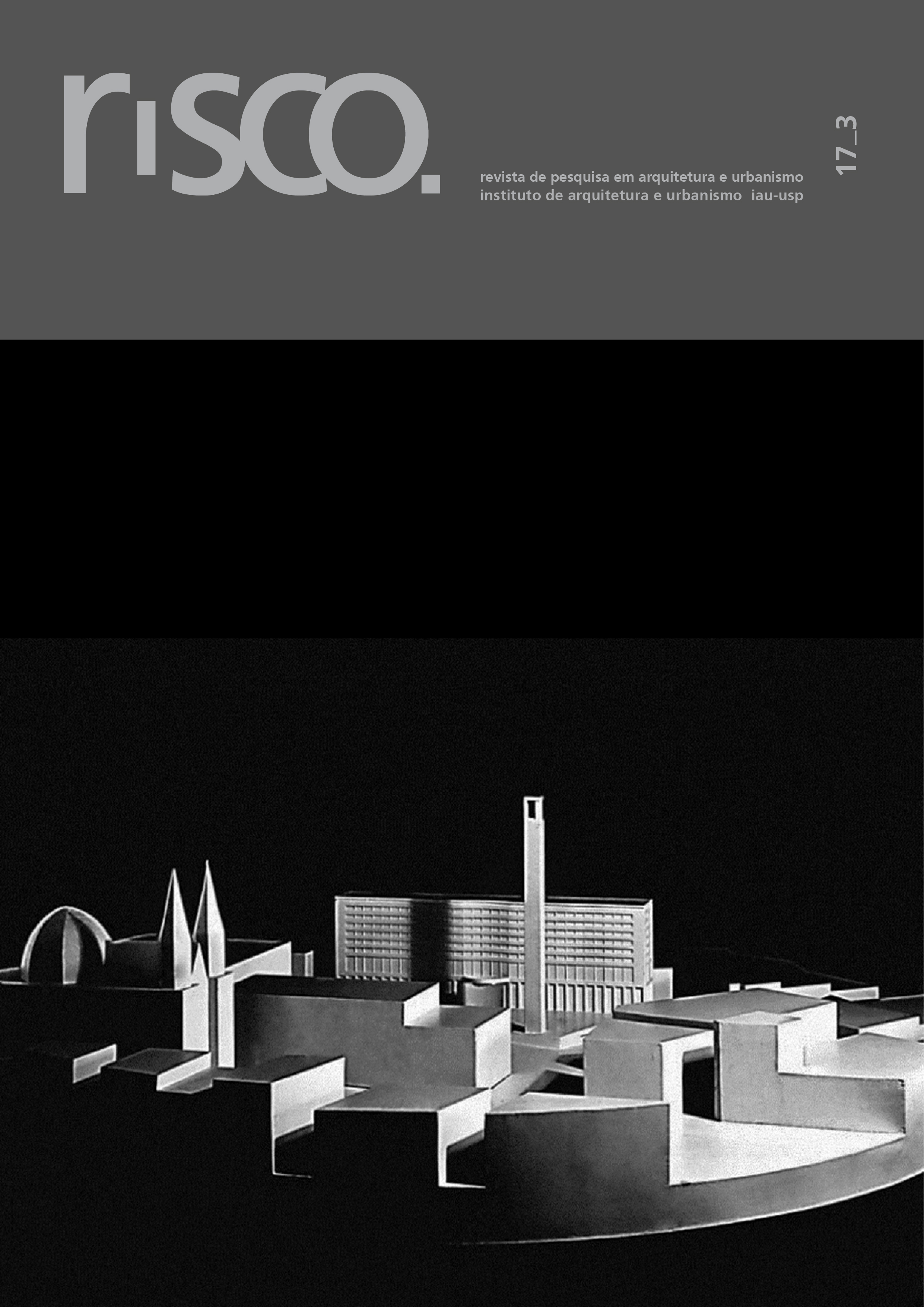Learning to Reuse Modernity
the Educational Challenge
DOI:
https://doi.org/10.11606/issn.1984-4506.v17i3p62-83Keywords:
Modern architecture, Reuse, TeachingAbstract
Three decades after the founding of DOCOMOMO [1], education remains an essential issue when thinking about the future of modern heritage, but today there is a need for critical reflection on the conceptual and methodological changes we need to face in the current context of complexity.
Modern architecture is now going through a paradigmatic moment, not only because of its inevitable degradation, but because of the impact of new scenarios that compel us to rethink its conservation and reuse considering both its special constructive condition and its specific functionality, as well as as its role in collective memory, as a recent inheritance. The teaching of architectural design must resolve these critical issues as a strategic objective that anticipates a more appropriate professional practice.
The conservation and reuse of modern buildings is still outside most schools of architecture. Thus, this text presents three diverse and complementary didactic experiences developed in Europe and South America: Conscious Project to update collective housing districts (Politecnico di Milano, Italy), experimental re-design to integrate modern individual houses in contemporary life (Universidade de Belgrano, Argentina) and participatory project to open a modern school to the community (University of Coimbra, Portugal). These case studies highlight the importance of confronting students with history and memory, and their importance for the reuse of apparently common buildings and not only for modern emblematic monuments.
[1] DOCOMOMO, Documentation and Conservation of the Modern Movement, is a non-profit association created in 1988 in the Netherlands with the aim of creating a space for exchanging ideas about the conservation, history and education of Modern Architecture. It is currently based in Lisbon, under the chairmanship of Professor Ana Tostões.
Downloads
References
CANZIANI, Andrea (et alt). Learning from Modern Heritage: Methodological Tools for Re-thinking Education in Conservation, Conferência em Adaptive Reuse, 14th International Docomomo Conference, Lisboa, 2016, p. 848-853
CUNNINGHAM, Allen, Modern architecture as Educational Catalyst, From Conference Proceedings Universality and Heterogeneity, 4th International Docomomo Conference, Eslováquia, 1996, p. 204–206
HERTZBERGER, Herman. Space and learning: lessons in architecture, 3. Rotterdam: 010 Publishers, 2008
DE JONGE, Wessel. Educating for Preservation and Reuse. Sessão em Methamporphosis. The Continuity of Change, 15th Internacional DOCOMOMO Conference, Ljubljana, 2018, p. 516-617
JONES, Peter Blundell, PETRESCU, Doina, TILL, Jeremy. Architecture and Participation. Routledge, 2013
KUIPERS, Marieke; de JONGE, Wessel. Designing from Heritage. Delft: TU Delft, 2017.
MONIZ, Gonçalo Canto, "Para um espaço de aprendizagem democrático", Morfema, 4, 2017, 12-29
Moniz, Gonçalo Canto; Peixoto, Paulo; Xavier, Sandra; Providência, Paulo (2017-11-23), "Dialogue with the community and photo elicitation for reuse of modern buildings design studios: a pedagogical experience" in Michel Melenhorst, Uta Pottgiesser, Christine Naumann, Theresa Kellner (org.), RMB Conference 2017. Detmold: Hochschule OWL (University of Applied Sciences), 79-89.
QUIROGA, Carolina. Heritage as a pedagogical resource and platform for exploration in architectural design education. In The Journal of Architecture RIBA, London, Routledge, vol.14, nº 4, 2012, p. 591-607
QUIROGA, Carolina. Redesign Education and Modern Heritage: the conflict and challenge of the emergent scenarios, Conferência em Conference Proceedings Expansion and Conflict, 13th International Docomomo Conference, Seoul, 2014, p. 63-67
SCHON, Donald. The Reflective Practitioner: How Professionals think in action. Nova Iorque: Basic Books, 1984.
Downloads
Published
Issue
Section
License
Autores que publicam nesta revista concordam com os seguintes termos:
a. Autores mantém os direitos autorais e concedem à revista o direito de primeira publicação, com o trabalho simultaneamente licenciado sob a Licença Creative Commons Attribution BY-NC-SA que permite o compartilhamento do trabalho com reconhecimento da autoria e publicação inicial nesta revista.
b. Autores têm autorização para assumir contratos adicionais separadamente, para distribuição não-exclusiva da versão do trabalho publicada nesta revista (ex.: publicar em repositório institucional ou como capítulo de livro), com reconhecimento de autoria e publicação inicial nesta revista.
c. Autores têm permissão e são estimulados a publicar e distribuir seu trabalho online (ex.: em repositórios institucionais ou na sua página pessoal) a qualquer ponto antes ou durante o processo editorial, já que isso pode gerar alterações produtivas, bem como aumentar o impacto e a citação do trabalho publicado (Veja O Efeito do Acesso Livre).

















